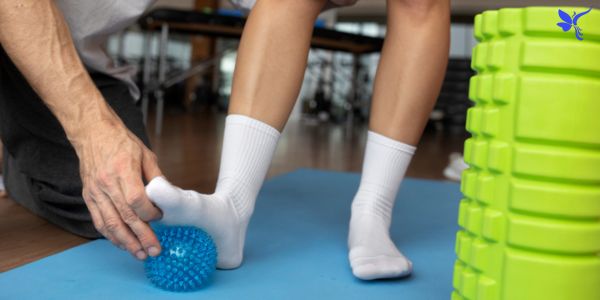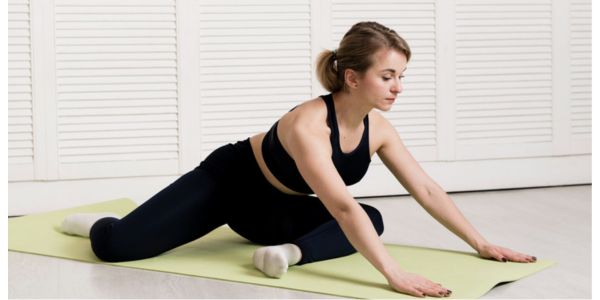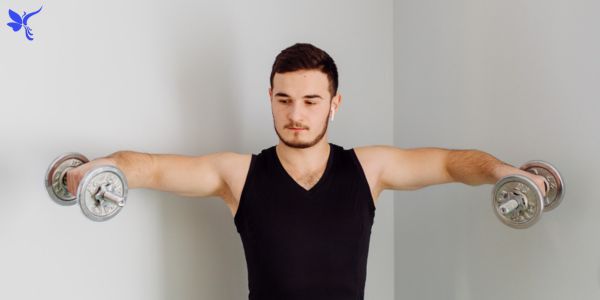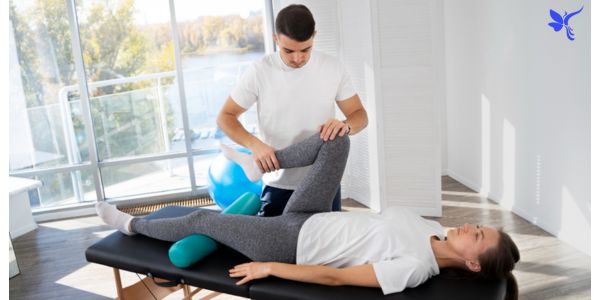Unlock profound relief from persistent aches and muscle knots with trigger point release self treatment with a lacrosse ball. This unassuming yet potent tool offers a gateway to enhanced physical freedom and well-being. Discover how applying targeted pressure can unwind deep-seated tension, improve mobility, and foster rapid muscle recovery.
Athletes, desk workers, and anyone seeking respite from discomfort will find this guide invaluable. Prepare to transform your approach to self-care, as this accessible technique helps you regain control over your body’s soreness and optimizes muscle performance.
Reclaim Your Comfort: Trigger Point Release Self Treatment with a Lacrosse Ball
Feeling stiff or holding stubborn muscle knots? You are not alone on this journey. Many people seek lasting pain relief from daily tension. Discover the remarkable power of Trigger Point Release Self Treatment with a Lacrosse Ball to unlock profound muscle health and revitalized mobility. This simple yet potent technique can transform your body’s comfort.
The Profound Power of Lacrosse Ball Therapy for Muscle Health

Embark on a journey to muscle health unlike any other. This unassuming tool, the lacrosse ball, revolutionizes muscle recovery for everyone. It is a true game-changer for athletic performance and everyday vitality. This targeted approach offers a unique path to deep pain relief.
You can significantly reduce both soreness and fatigue after demanding activities. Moreover, embracing Trigger Point Release Self Treatment with a Lacrosse Ball will remarkably boost your muscle performance. This potent method boosts your ease of movement and enhances your entire well-being.
Essential Tools for Self-Myofascial Release: Lacrosse Ball vs. Peanut Ball
Selecting the perfect instrument is the first vital step for highly effective self-myofascial release. The lacrosse ball deftly targets pinpoint trigger points. Think of it as a laser for your muscle knots. However, a peanut ball offers unique advantages for broader areas, providing balanced pressure.
Your choice between a single lacrosse ball and a peanut ball depends on the specific region you wish to treat. Consider the differing firmness and unique shapes. The lacrosse ball excels at deep pressure on smaller, isolated areas, while the peanut ball offers stability and dual contact for larger muscle groups like the spine or calves. Making an informed decision ensures your trigger point release self treatment with a lacrosse ball or peanut ball as effective as possible.
The Nuances of Tool Selection
Your ideal tool hinges on the body part you are addressing. A lacrosse ball’s compact size and density allow for deep tissue massage into concentrated muscle tension. However, the peanut ball’s clever design cradles areas like your spine, providing pressure on either side without impacting bones. This custom selection greatly enhances your relief.
The Core Principles of Effective Trigger Point Release
Unraveling persistent muscle knots demands a thoughtful and strategic approach. It is paramount to truly understand what trigger points are and how they manifest within your connective tissue. These tender spots, when activated, can cause referred pain and limit your natural range of motion.
Effective release follows a clear, simple methodology. First, you identify the trigger point, that specific sensation of a tight knot. Next, gently bear down with your chosen tool. You will hold this sustained pressure, typically for 30 to 90 seconds, allowing the muscle to fatigue and ultimately release. Remember to breathe slowly and deeply throughout the process; this deep breath helps your muscle relax and encourages the pain to fade. Always listen to your body’s subtle cues; avoid pushing through sharp or unbearable sensations.
Mastering Lower Body Relief: Techniques for Feet, Calves, and Shins

Your feet serve as the body’s fundamental support, much like the famous Alexander Pope quote: “As the twig is bent, so grows the tree.” Releasing tension here is absolutely vital for overall balance and posture. Target specific areas for remarkable pain relief, from arch discomfort caused by plantar fasciitis to stiffness in your toes and scar-tissue in your sole. This proactive Trigger Point Release Self Treatment with a Lacrosse Ball begins at your very foundation.
Your lower legs endure constant work, making them prime candidates for muscle tension. Treat your calves by rolling over them, focusing on the large gastrocnemius and deeper soleus muscle groups. For your shins, particularly the anterior tibialis, gently roll away discomfort. This section provides detailed methods for effective trigger point release, ensuring comprehensive relief from common lower body aches.
Deep Dive into Hamstring and Quadriceps Release
Your hamstrings and quadriceps are powerful muscle groups, often burdened by both active lifestyles and prolonged periods of sitting. They can harbor significant muscle tension, limiting flexibility and causing discomfort. Employing precise lacrosse ball techniques can significantly alleviate this tightness and improve your range of motion.
Explore methods for releasing the entire hamstring group and easing tension in your quadriceps, including the rectus femoris and vastus muscles. You will learn how to systematically address common tightness in these large muscle groups, leading to profound relief. This targeted deep tissue massage supports your athletic performance and everyday comfort.
Optimizing Glute and Hip Mobility with Lacrosse Balls
Unlocking superior mobility in your glutes and hips is like finding a hidden key to overall body freedom. This helps soothe back stress and elevate your whole posture. Targeting specific muscles like the gluteus maximus, medius, and minimus with a lacrosse ball drastically improves your flexibility.
You will discover effective methods for releasing persistent piriformis tension, a common cause of sciatica-like pain. This focused trigger point release self treatment improves overall hip flexibility and significantly enhances your range of motion. It’s a transformative step towards greater comfort and agility.
Addressing Common Lower Body Issues: IT Band and TFL Release
Deciphering the IT band and TFL‘s workings proves critical for lasting lower body relief. These dense bands of connective tissue can become incredibly tight, often causing lateral knee or hip pain. Employing safe rolling techniques for these areas prevents further irritation.
Using a lacrosse ball for IT band and TFL release requires a gentle, controlled approach. Always be mindful of your body’s signals; pushing too hard can cause bruising or exacerbate discomfort. This section provides effective techniques and essential cautions, ensuring best practices for relieving these sensitive areas.
Upper Body Mastery: Releasing Tension in Forearms, Biceps, and Triceps

Your forearms endure immense strain daily from tasks like gripping weights, typing, and even texting. This constant tension can unfortunately transfer to your elbow, wrists, and hands, leading to issues such as inflammation, numbness, or weakened grip-strength. Lacrosse ball therapy offers remarkable pain relief for these areas.
You can target specific muscle knots in your biceps and triceps, relieving persistent soreness. This dedicated self-myofascial release brings significant freedom from nagging aches in your upper extremities. It helps restore proper function and mobility to your arms, improving your overall physical capabilities. This is where Trigger Point Release Self Treatment with a Lacrosse Ball truly shines.
Targeting Back and Chest: Effective Torso Release Techniques
Unwind persistent tension throughout your back and chest for significantly improved posture and easier breathing. Our modern lives often contribute to stiffness in these crucial areas. Employing strategic lacrosse ball movements can liberate your entire torso, offering profound pain relief.
You will discover effective techniques for releasing the upper, mid, and lower back, targeting muscles like the rhomboids and erector spinae. Furthermore, learn to open up your chest and pectorals, addressing shoulder blade pain and enhancing overall mobility. This trigger point release self treatment helps you stand taller and feel more comfortable.
Advanced Strategies for Deeper Muscle Unwinding
Elevate your self-myofascial release practice beyond basic static holds. Integrating purposeful movement with sustained pressure unlocks profound, lasting relief. Imagine your muscle fibers gently unraveling. You can explore techniques to reach even the most stubborn, deeply seated muscle knots.
Feeling those stubborn knots? Release deep muscle tension with this simple lacrosse ball trick. Focus on controlled breathing and full relaxation to enhance the effectiveness of each release. This refined approach helps in addressing chronic muscle tension and improving overall flexibility.
Common Mistakes to Avoid in Self-Myofascial Release
Navigating Trigger Point Release Self Treatment with a Lacrosse Ball requires awareness of potential missteps. Applying too much pressure too soon can cause bruising or even exacerbate existing injuries. Remember, this practice should feel like a “good hurt,” not sharp agony.
Another common pitfall is not holding the pressure long enough for the muscle to truly release. Ignoring your body’s clear pain signals is also a major error. Additionally, improper body positioning can make the technique ineffective or even harmful. Sidestep these common errors for safer, better results.
Expert Tips for Maximizing Your Lacrosse Ball Therapy Sessions
Optimize every lacrosse ball session for peak effectiveness and profound pain relief. Proper hydration is absolutely crucial; a well-hydrated body allows fascia and muscle tissues to glide more freely, aiding the release process. Think of it as lubricating your internal springs.
A quick warm-up is always wise before deep self-myofascial release. This can be a short walk or light stretching. Incorporating stretching directly post-release helps the muscle retain its newfound flexibility. Establishing a consistent routine amplifies your results, and most importantly, always listen to your body’s unique feedback.
Knowing Your Limits: When to Seek Professional Physical Therapy

While Trigger Point Release Self Treatment with a Lacrosse Ball is a powerful tool for pain relief, sometimes professional intervention becomes necessary. Recognizing specific signs indicates a need for expert guidance. For instance, if pain worsens, spreads, or persists despite consistent self treatment, it is time to consult a professional.
Understanding the clear difference between effective self-care and medical intervention is paramount. Conditions such as severe injury, nerve impingement (like brachial plexus issues), or chronic, debilitating pain often require a licensed physical therapist. They can provide targeted manual treatment, potentially including deep tissue massage, cupping, scraping, taping, joint mobilization, Functional Manual Reaction (FMR), manual lymphatic stimulation, Active Release Technique (ART), or Proprioceptive Neuromuscular Facilitation (PNF). Safeguarding your long-term muscle health means knowing when to ask for help.
Embracing Consistency: Your Blueprint for Enhanced Performance and Well-being
Consistency transforms your lacrosse ball practice from a mere fleeting fix into a profound, life-enhancing habit. Cultivate lasting flexibility and strong athletic performance through regular self-myofascial release. This dedicated routine helps your connective tissue remain pliable.
Integrating lacrosse ball massage into a holistic wellness routine truly elevates your overall well-being. It is more than just pain relief; it is about proactive muscle health and sustained mobility. Embrace this journey of consistent practice and heightened self-awareness; your body will thank you for it.
Conclusion
You have journeyed through the intricacies of Trigger Point Release Self Treatment with a Lacrosse Ball. This comprehensive guide should arm you with profound knowledge and practical techniques to tackle bothersome muscle tension. You are now fully equipped to enhance your body’s natural healing capabilities and reclaim comfort. Ready to feel better and move with newfound freedom?
FAQ
How do you trigger point release with a lacrosse ball?
Hold steady pressure on that tender spot with the lacrosse ball. Let your body weight do the work. Keep the pressure tolerable, and hold it until your muscle releases, typically for about 30 to 60 seconds.
How do you release a trigger point with a ball?
Apply sustained, firm pressure to the “knot” with the ball, breathing deeply, until the pain subsides and the muscle relaxes.
Where to put lacrosse ball for psoas release?
For psoas release, carefully position the ball just inside your hip bone, below your belly button, while lying on your stomach.
How to use lacrosse ball for myofascial release?
Gently roll the lacrosse ball over your tight muscle areas. Pause on tender spots and apply steady pressure there. This helps your fascia release, bringing relief.
What is the fastest way to release trigger points?
Consistent, direct pressure combined with deep breathing is often the most effective way to quickly encourage a trigger point to release.
What does rolling your foot on a lacrosse ball do?
Rolling your foot on a lacrosse ball helps release tension in the plantar fascia and foot muscles, improving mobility and alleviating foot pain, including plantar fasciitis.
